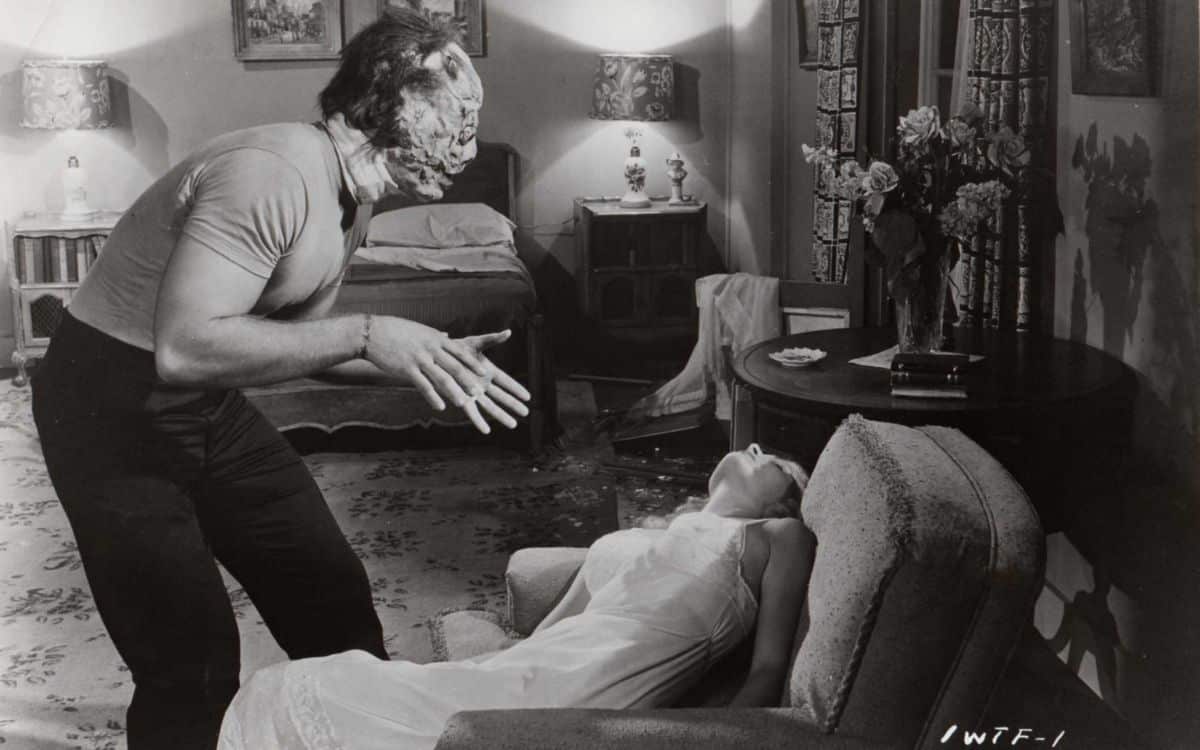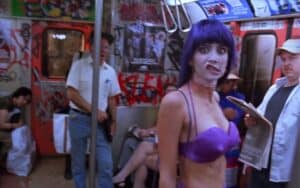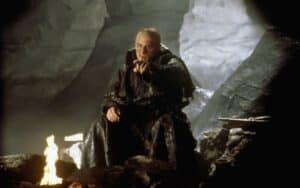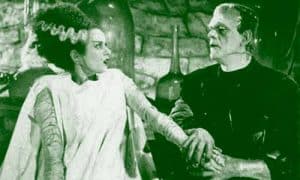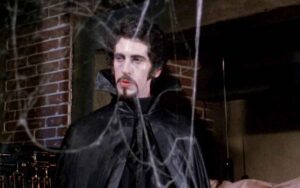I Was A Teenage Frankenstein 1957 surprisingly shares much in common with Hammer’s The Curse of Frankenstein, writes DAVID DENT
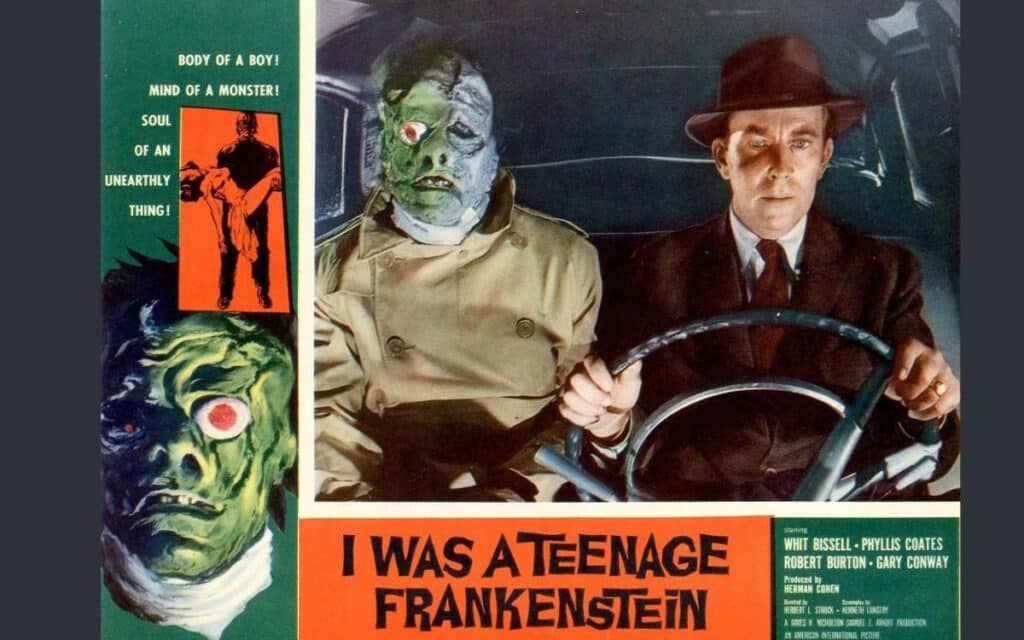
TITLE: I Was A Teenage Frankenstein
RELEASED: 1969
DIRECTOR: Herbert L. Strock
CAST: Whit Bissell, Phyllis Coates, Robert Burton, Gary Conway, George Lynn
Review of I Was A Teenage Frankenstein 1957
Regular visitors to the Spooky Isles site might be a little baffled on seeing a review of a 1950s US schlock title here. But bear with me, as I make the case for the influence of UK horror cinema on Herbert L. Strock’s fabulous B flick.
Professor Frankenstein (Whit Bissell, pretty much repeating his grumpy doctor role from I Was a Teenage Werewolf earlier the same year) is a respected, brilliant scientist who, in pursuit of his “higher purpose” – the assembly of dead body parts to make a new living being – has rather alienated his fellow professionals. Frankenstein references “that great ancestor of mine whose name I bear” and longs to return to his native England, partly through the call of the homeland, partly to escape the crimes he has committed.
Luckily, his colleague Dr Karlton (Robert Burton) has stuck with him even when others have walked away, an association that comes in handy when a car full of teenagers crashes outside the house of Frankenstein – a pad that includes a morgue and laboratory – providing the pair with the raw materials to put the good Professor’s theories into practice.
Augmented by body parts acquired from the contents of the local cemetery Frankenstein, with the aid of an increasingly reluctant Karlton, is allowed to go about his ghoulish task without disturbance courtesy of the call and visitor screening services provided by the lovely Margaret (Phyllis Coates), who has a crush on the Prof. He’s proposed to her and wants her to return to England with him.
Frankenstein’s creation – a strapping lad with a (literal) car crash face and an eggs-over-easy-eyeball – is soon up and about, lifting weights and learning passages from the Bible (under Philip Scheer’s makeup it’s Gary Conway in his first screen role).
The Professor, pleased with his work – “a teenage marvel!”, he exclaims – sets himself up as a stern dad figure; “what I create, I must control!” he rants, while confining his ‘son’ to the lab and dumping all the body parts he doesn’t need down a chute into the waiting jaws of a nearby alligator, lurking in a handy basement tank.
Margaret starts getting nosey and soon rumbles what’s going on, which will lead to her demise, set up by Frankenstein; the creature, sick of being confined to his room, breaks out and slays a woman who, justifiably, screams the place down when she sees the lad’s disfigured face.
The Professor, who was previously happy to let fate dictate the supply of body parts, takes matters into his own hands by getting the creature to attack a courting couple, the male half of which (Conway again) provides the handsome visage which is grafted onto the monster. As a consequence the creation is now a fully formed, dishy young jock, complete with age appropriate fascination for his own image; “Let me give him his special toy” says Frankenstein dismissively, passing the monster a hand mirror.
But it’s all too little too late; Frankenstein wants to disassemble his creation and smuggle it back to England, but the creation gets wise and soon ‘dad’ becomes breakfast for the alligator; as the picture changes from black and white to full colour in its final moments, the creature kills himself rather than be captured.
I love this film and also Strock’s follow up features Blood of Dracula (with which this movie was originally double billed in America) and 1958’s How to Make a Monster. But watching it again the movie emerges more as an homage to all things English gothic; specifically Terence Fisher’s The Curse of Frankenstein. See, I told you I’d get us back on track.
Fisher’s film premiered in the States in June 1957, and I Was A Teenage Frankenstein started shooting four months later. It was completed quickly for release in November of the same year, so it’s quite reasonable to assume that Strock had time to see, and incorporate the ideas from The Curse of Frankenstein into his script. But if we look carefully, he borrowed more than concepts.
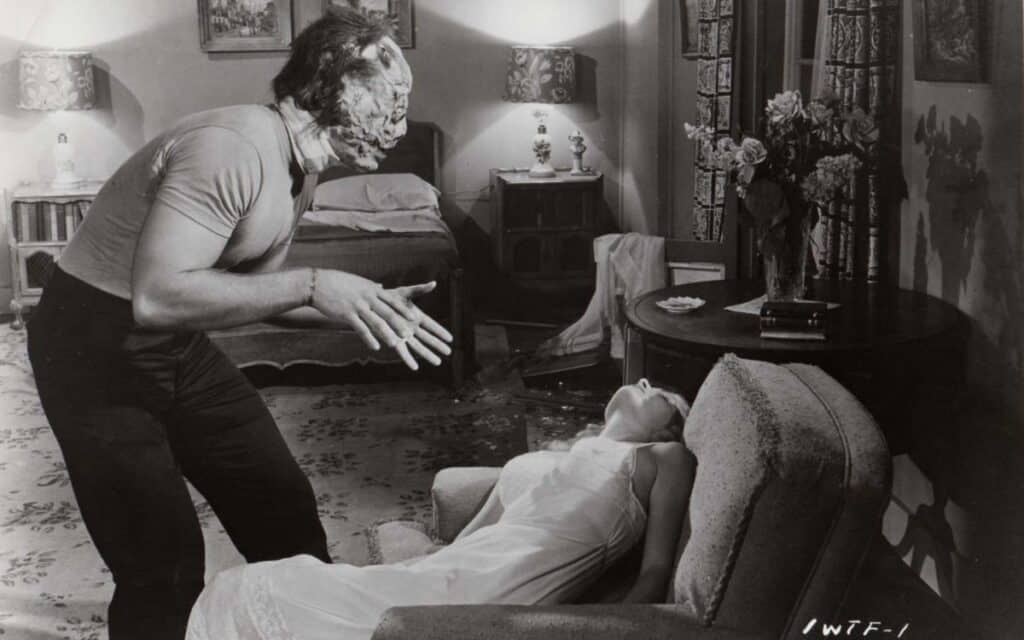
The fraught relationship between Frankenstein and Karlton fairly accurately mirrors the characters of the Baron (Peter Cushing) and his reluctant assistant Paul Krempe (Robert Urquhart) in Fisher’s film.
The Curse of Frankenstein was renowned as a movie that pushed the limits of acceptable gore, with shots including a severed head and an eyeball. In I Was A Teenage Frankenstein Strock copies this, including footage of severed limbs, quite unusual for the time in the US.
In I Was A Teenage Frankenstein, when Frankenstein reveals the extent of the monster’s disfigurement, for the audience it’s pretty much the same experience as the first sight of cloth wrapped Christopher Lee as the monster in The Curse of Frankenstein.
The two movies have a similar juxtaposition between the grim and the refined, especially at table. Bissell’s prissy Frankenstein – a frustrated father figure, rather like Cushing’s Baron – is capable of doing terrible things, but then in the next shot sitting down to dinner – “excellent roast”, he compliments; which is pretty much the same as Cushing’s “Pass the marmalade” comment at the breakfast table following the Baron’s killing of Justine (Valerie Gaunt) in The Curse of Frankenstein.
Coates’s character in I Was A Teenage Frankenstein is a conflation of two roles in The Curse of Frankenstein: Frankenstein’s fiancé Elizabeth (Hazel Court) and the inquisitive maid Justine. Margaret’s cause of death is the same as Justine’s; in both cases Frankenstein arranges for the monster to do the killing, while he closes the door to prevent escape, and then lingers to enjoy the sounds of the victim dying.
And finally, what other reason was there for Strock deciding to photograph the last 90 seconds of his film in colour, if not as an homage to the Eastmancolor in which The Curse of Frankesntein was filmed (itself quite a rarity, as most horror films at the time would have been shot in black and white)?
So there you have it; two fabulous films, both made the same year, about the same subject, but on different continents, one potentially influencing the other – what do you think?
Tell us your thoughts about I Was A Teenage Frankenstein 1957 in the comments section below!

